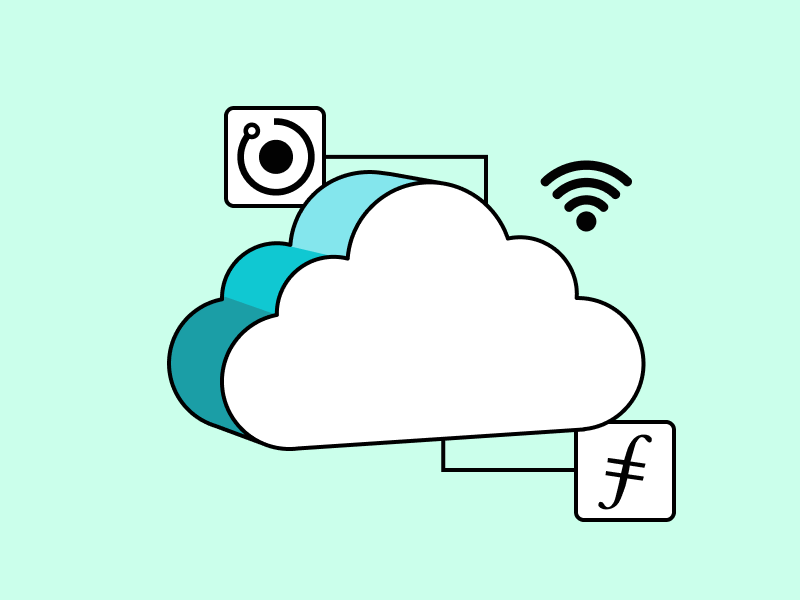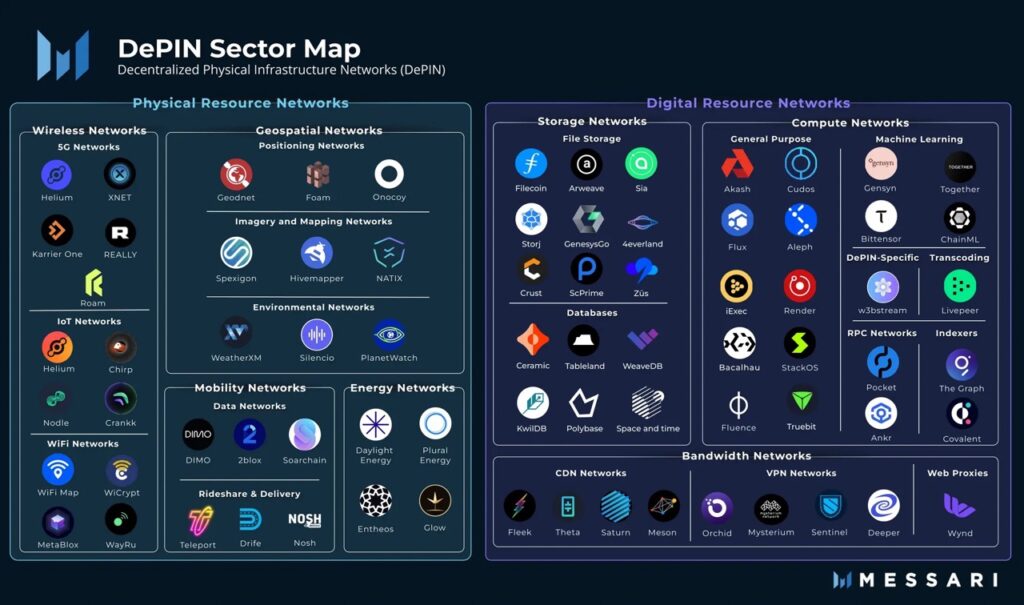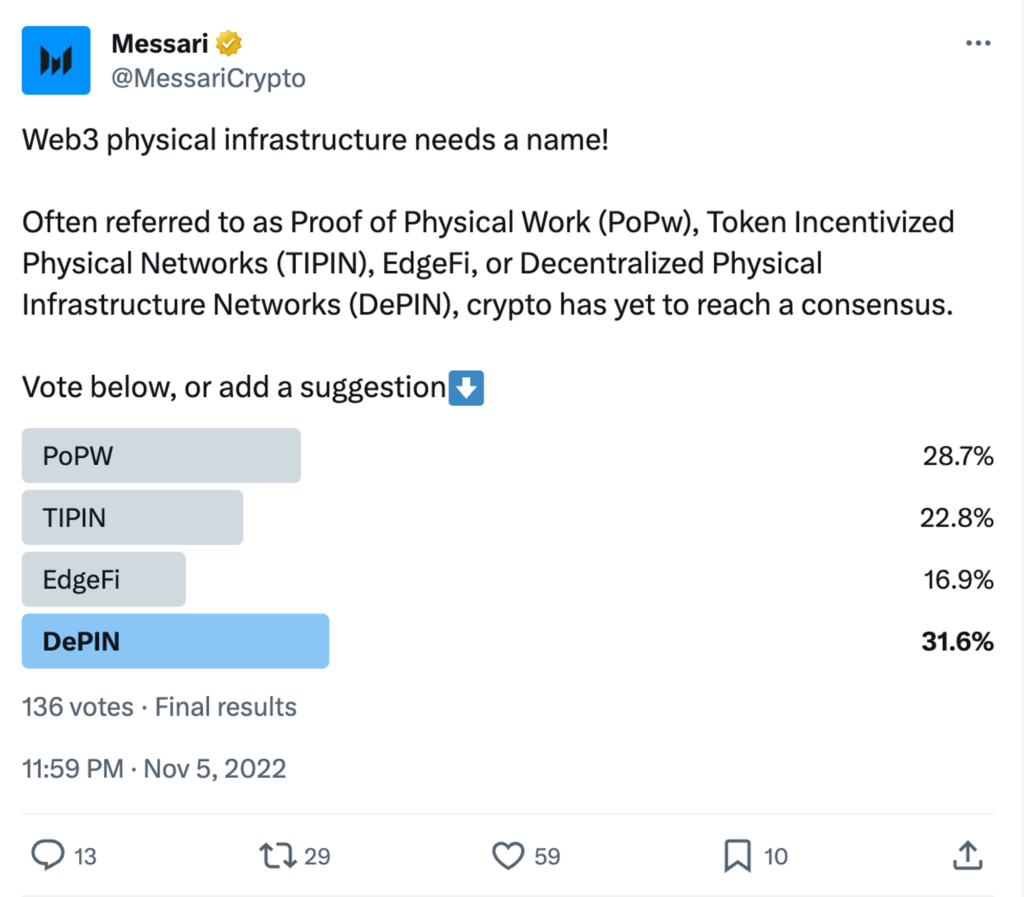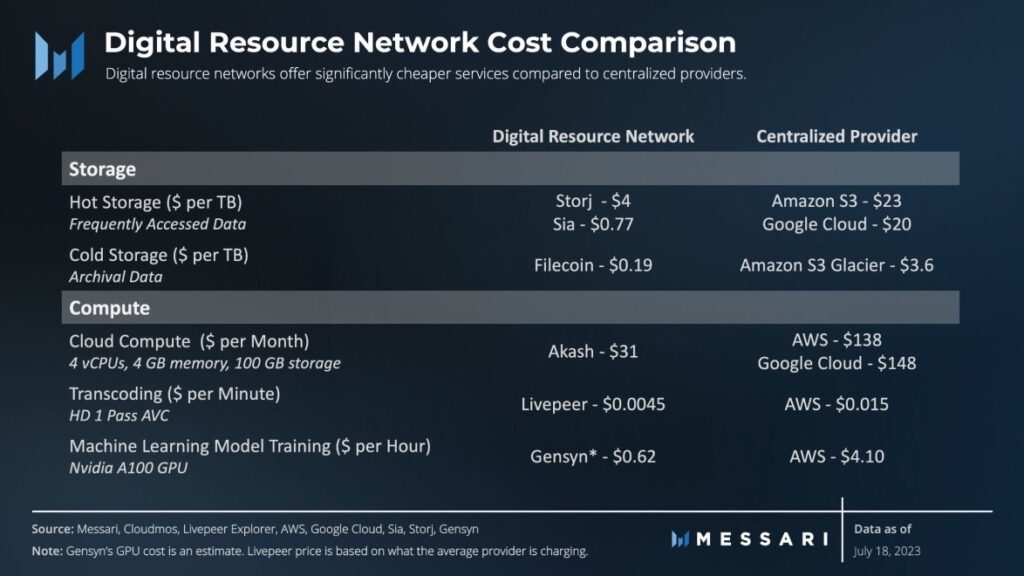What is DePIN (Decentralized Physical Infrastructure Network)?

The crypto world has been buzzing with narratives like Real-world Asset (RWA), decentralized cloud, liquid staking, layer 2, and many others. By the end of 2023, a new narrative is in the spotlight, called DePIN or Decentralized Physical Infrastructure Network. With a Total Value Locked (TVL) of around 19.5 billion US dollars, this narrative has driven crypto adoption at a massive scale. DePIN allows users to access services like Wi-Fi, transportation, data storage, maps, and more, all while earning rewards. This article will further discuss DePIN, an exciting topic in the crypto world.
Article Summary
- 🌐 DePIN is a concept that uses token rewards and blockchain technology to encourage physical infrastructure development in the real world.
- 💰 DePIN aims to shift the traditional centralized model to a decentralized one. DePIN involves global user participation to overcome dependency on large entities and implement a ‘shared economy’ model.
- 🔄 DePIN’s Flywheel concept helps us understand how one aspect of it drives the growth of another. Establishing a positive growth cycle includes infrastructure providers earning tokens as an incentive to create organic network growth and fulfill user demand.
- 👀 Some of the crypto projects that implement the DePIN model are Helium , Filecoin , Render (RNDR), IoTeX , and Livepeer .
What is DePIN (Decentralized Physical Infrastructure Network)?
DePIN is a concept that uses token rewards to encourage establishing and developing physical infrastructure in the real world. Physical infrastructure includes wireless networks, cloud services, mobility networks, and power grids. Most of them have been dominated by large companies with high capital.
Centralized entities almost monopolize the prices and services offered to end users, leading to a lack of competition and innovation. The DePIN project seeks to solve some of these problems by utilizing blockchain technology, token incentives, and the power of the internet.
A key feature of DePIN is the shift from the traditional centralized model to a decentralized one. It involves global user participation to overcome dependency on large entities and implement a ‘sharing economy’ model.
For example, Hivemapper uses the drive-to-earn concept. It allows users to participate in road image collection and create a decentralized version of Google Maps through car dashboard cameras. Users will earn HONEY tokens for each piece of data they provide.
DePIN creates an entirely new design space for physical infrastructure. Each network will involve real-world devices that generate and share their data.
Quoted from Messari, the DePIN sector map was initially divided into four main categories: servers, wireless, sensors, and energy networks. However, due to the many variations of these categories, subcategories were added: Physical Resource Networks (PRNs) and Digital Resource Networks (DRNs).
- Physical Resource Networks (PRNs) incentivize participants to direct or deploy location-dependent hardware to offer real-world, non-fungible goods and services, such as energy, geospatial, and connectivity.
- Digital Resource Networks (DRNs) incentivize participants to direct or deploy hardware to offer fungible digital resources, such as computing, storage, and bandwidth.

DePIN Concept
The term DePIN first appeared in the crypto industry in November 2022. Messari initiated using DePIN through a Twitter vote to name the physical infrastructure of Web3.
Besides DePIN, some of the names included in the voting are Proof of Physical Work (PoPw), Token Incentivized Physical Networks (TIPIN), and EdgeFi. ‘DePIN’ received the most votes with 31.6%.

How Does DePIN Work
As mentioned before, the DePIN network involves real-world physical devices that generate and share their data. The bigger the data available, the greater the potential for innovation and data utilization in developing dApps to support the growth of the DePIN network.
DePIN involves four main components, as follows:
- Physical Infrastructure Network: DePIN requires physical infrastructure such as vehicles for mobility networks, solar panels for energy networks, hotspots for wireless networks, and servers for cloud networks.
- Off-chain Computing Infrastructure: DePIN relies on intermediaries that connect physical world data and blockchain, such as oracles.
- Blockchain Architecture: Each DePIN network interacts with a blockchain architecture that contains smart contract logic. This blockchain acts as a ledger and the center of the token economy.
- Token Incentives: DePIN utilizes the concept of the token economy. Service providers will be rewarded with tokens on the network.
DePIN Flywheel

DePIN Flywheel is a concept that illustrates how the growth of one aspect of it can encourage the growth of other aspects. It is then expected to create a sustainable growth loop. This process involves several key interrelated steps:
The first step involves infrastructure development, where supply-side participants provide their physical infrastructure and connect it to the DePIN network. It creates the basis for further growth.
Then, supply-side participants earn crypto tokens as an incentive for providing infrastructure. These tokens are not only a form of reward but can also be used within the DePIN ecosystem to gain additional benefits.
With more participants and infrastructure involved, the DePIN network experiences organic growth. It creates a solid foundation for the ecosystem that allows various services and functions to expand.
Furthermore, with a solid infrastructure, more and more users pay to use the services or access the data. It creates a revenue stream that incentivizes participants to continue contributing.
The success of the network attracts more investors and new users. Investors’ presence supports financial growth, while new users make additional contributions to the network to strengthen its appeal.
Helium uses this Flywheel concept to significant effect. It motivated people worldwide to build the world's largest IoT network in just three years (400k+ hotspots online globally).
What are the Advantages of DePIN?
The future of DePIN promises significant developments in physical infrastructure and blockchain technology. With the rapid growth in connected smart devices and dApps, it has great potential to become a major player.
Here are some of DePIN’s advantages over traditional physical infrastructure:
- Decentralized: One of the key advantages of DePIN is the shift from a centralized to a decentralized model. DePIN removes the dependency on a single entity or large corporation to establish and maintain physical infrastructure.
- ‘Sharing Economy’ model: DePIN applies the principle of sharing economy. The costs and responsibilities of establishing and maintaining infrastructure are distributed among supply-side participants (service providers), creating a more cost-effective and equitable model.
- Lower Price: DePIN users can enjoy lower costs than the traditional model. For example, in data storage, users can choose Filecoin or Storj, which are more affordable and provide an opportunity to earn tokens in return.

- Expanding Innovation: By removing entry barriers associated with traditional infrastructure, DePIN motivates new players to compete in markets previously dominated by several established players.
DePIN Crypto Project Example
1. Helium (HNT)
Helium is a DePIN project that builds a decentralized wireless network that allows users to earn tokens (HNT) in exchange for providing wireless connectivity. Users can deploy Helium hotspots to provide wireless connectivity in an area, and in return, they are given HNT tokens.
Helium is expanding its network with Helium Mobile. The Helium Mobile service combines the Helium network with the 5G cellular network. Thus, users in the US can enjoy cheaper mobile plans at 20 US dollars/month compared to the average US citizen spending 157 US dollars/month.
2. Filecoin (FIL)
Filecoin is a project that operates with a focus on decentralized data storage. This platform allows individuals or companies to rent out unused storage on their hardware.
The platform is also a marketplace for data storage services. Filecoin incentivizes storage providers by compensating FIL tokens, and users pay for this storage.
3. Render (RNDR)
Render is a project that focuses on providing decentralized rendering services. This platform works as a peer-to-peer Graphics Processing Unit (GPU) provider that connects parties who want to do rendering work with parties with ‘idle’ GPUs.
With this model, Render creates an ecosystem where providers can get rewarded using Render tokens (RNDR) while users get decentralized rendering services.
Read more about Render in this article.
4. IoTeX (IOTX)
IoTeX is a project focusing on the Internet of Things (IoT) and creating security and privacy solutions through decentralized hardware. It brands itself as a platform for DePIN developers.
IoTeX aims to empower billions of devices and dApps in the physical and digital world. Users can use IoTeX decentralized devices to enhance security and privacy; in return, they can earn IOTX tokens.
5. Livepeer (LPT)
Livepeer is a decentralized video streaming platform that makes it easy for developers to integrate live video into their applications. The platform provides video transcoding services, which is the process of changing the video format to suit the user’s bandwidth and device. The LPT token is used as a utility token in the Livepeer ecosystem.
Read more about Livepeer (LPT)—a Decentralized Video Streaming Platform.
Conclusion
DePIN represents a paradigm shift in establishing and maintaining physical infrastructure using blockchain technology and token incentives. With the advantages of decentralization, the ‘sharing economy’ model, and lower prices, DePIN has the potential to become a major player in the world of physical infrastructure.
DePIN’s growing projects are expected to bring significant innovation and disruption in building and maintaining physical infrastructure networks in the future.
Buy DePIN Token on the Pintu App
You can buy tokens such as HNT, FIL, RNDR, and LPT without worrying about fraud on Pintu. In addition, all crypto assets on Pintu have passed a rigorous assessment process and prioritize the principle of prudence.
The Pintu application is compatible with various popular digital wallets, such as Metamask, to facilitate transactions. Download the Pintu app on the Play Store and App Store! Your safety is guaranteed because Pintu is regulated and supervised by Bappebti and Kominfo.
In addition to making transactions on the Pintu app, you can learn more about crypto through various Pintu Academy articles that are updated weekly! All Pintu Academy articles are created for educational and knowledge purposes, not as financial advice.
References
- Sami Kassab, Navigating the DePIN Domain, Messari, accessed 15 December 2023.
- Connor Lovely, What are Decentralized Physical Infrastructure Networks (DePIN)? IoTeX, accessed 15 December 2023.
- Raullen Chai & Andrew Law, DePIN will become one of this decade’s most important crypto investments, Cointelegraph, accessed 15 December 2023.
- Richard Larsson, DePIN: Just A New Buzzword or Web3’s Breakthrough Into the Real-World, Medium, accessed 15 December 2023.
Share
Related Article
See Assets in This Article
FIL Price (24 Hours)
Market Capitalization
-
Global Volume (24 Hours)
-
Circulating Supply
-


